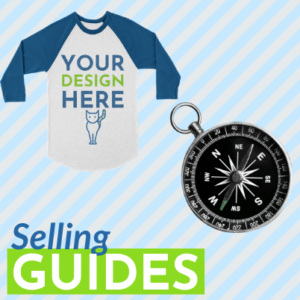What to Do When Your Online Store Doesn’t Get Sales Right Away
You spent months creating the perfect ecommerce store, sourcing your products, & are ready to launch. But when the sales don’t roll in, what do you do next? Instead of taking the “wait & see” approach, use these strategies to earn more sales & keep your customers coming back for more.
Recruit Beta Testers for Your Store
If you want to put yourself in the shoes of first-time shoppers, you need to see your ecommerce store with fresh eyes. Unfortunately, we get so close to our own stores that it’s challenging to identify where the gaps are.
Instead of trying to do it on your own, recruit the help of beta testers for your store. A beta test helps validate your site & ensure customers are satisfied with their experience. This strategy can also apply to products, promotions, & anything else you want to test with your audience. Your beta testers can be your social media audience, acquaintances, friends, or family. It’s always best to get the most transparent & honest feedback possible if you don’t have a personal relationship with your beta testers, but recruit who you can to help.
Give your beta testers a list of points to consider when reviewing your ecommerce store. Here are a few ideas:
- What was your first impression of the ecommerce store (be honest!)
- What are your thoughts about the store design?
- Did you find the products you wanted?
- Was the site easy to navigate?
- Did the site load quickly?
- What did you think about the price & selection of the products?
- Were the product descriptions helpful & easy to understand?
- Was the check-out experience straightforward?
- What did you like the most about the store?
- What didn’t you like about the experience?
You can use these same beta testing strategies if you use platforms like Amazon FBA. Although you won’t need feedback on your site design, you can ask beta testers to zero in on your images, product descriptions, & clarity of your information.

Re-Strategize Non-Essential Pages & Info
Customers need detailed information to make a decision about purchasing a product. They want the scoop on everything from size & color to shipping speed. However, there’s also plenty of unessential information that your customers don’t need front & center.
For example, if you built your site on Shopify or WordPress, you likely have a terms of service or privacy policy page. Customers need (and are required) to have access to this information, but it doesn’t need to be in your top menu bar. Instead, move those pages to the bottom.
If you use Etsy or eBay, you should optimize your product descriptions to include the most important keywords & information like sizing at the top. But move details like how you handle returns or specific facts about your company closer to the bottom.
Offer More Personalization
Offering more personalization in the customer experience could dramatically improve your sales & give you a competitive edge. Research shows that 80% of online shoppers want personalization from retailers. Personalization could mean many different things from your online store.
Set up your email marketing system to include your customer’s first name in the introduction. Segment your list to target customers with specific interests to tailor your messaging & recommendations.
Cross-selling apps are also an easy way to offer more personalization. When your customers click on a specific product, a cross-selling app can show other options they might like & give your sales a boost.
Beyond what’s going on with your website, you can also offer highly personalized & customized products. Print-on-demand makes creating seasonal, timely, & high-quality products easy. With CustomCat, you can quickly provide multiple, personalized products with customized designs in no time.

Make It Easy to Buy
It’s not uncommon for ecommerce entrepreneurs to spend so much time on their site design, products, & setting up customer service channels that they overlook the buying process. Scour your site & look at your buy buttons, call-to-action (CTA), info on returns, & shipping speed.
If everything looks okay, try your site on multiple devices. Research shows that nearly three out of every four dollars spent on online purchases today is done so through a mobile device. Yet not all ecommerce stores are properly optimized for mobile. Make sure the link is easy to click on with your finger & loads quickly.
Rescue Abandoned Shopping Carts
Check your abandoned shopping cart statistics before you give up on seeing those first sales. Customers frequently load up their carts, only to save them for later & forget to buy. Others are on the fence & need a reason to buy. Abandoned shopping cart apps can be customized to prompt customers to return & finish their purchases. You can also offer a short-term promo code or promotion if your customer completes their order within a specific period of time.

Offer Live Chat
Are you available for your customers & ready to answer questions? Live chat statistics show that most online shoppers prefer chat technology over other methods. Research shows that up to 53% of customers are also likely to abandon their online purchase if they can’t get quick answers to their questions.
When you’re just getting started in your ecommerce journey, you usually wear every hat in your business. Keep in mind that increasing your live chat hours is better than offering none at all. As your business grows, you can recruit the help of a virtual assistant to manage your live chat process & other areas of your business so you can focus on growth.
Spy On Your Competitors
Spying on your competitors can be eye-opening & offer clues to what you’re doing right & where you can improve. The idea isn’t to copy or mimic their ecommerce store, but to gain valuable insights. What are their price points? How many products do they offer? What does their website look like? Do their customers engage on social media? Use the information & inspiration gathered to make proactive changes in your own store.

Study Where You’re Losing Shoppers
Once you’ve strategized how to get more customers to your site & convert, dig into Google analytics & your ecommerce platform’s analytics to see where your shoppers are dropping off. You may find they’re all landing on the same page, clicking a few products, & then all leaving in similar areas. Comb through all of those exit points to see how you can improve everything from the design to the product copy.
What are your best tips for getting more sales in your ecommerce store? Let us know by leaving a comment!


